There are various available examples with a formula for a 2D Gaussian Blob and drawing it via Pyplot, for example:
How to generate 2D gaussian with Python?
and
How to plot a 2d gaussian with different sigma?
I'm attempting to change this over to OpenCV (in Python).
Some requirements are:
-ability to specify different height and width for the blob, i.e. ability to make the blob an ellipse (not always a circle)
-ability to specify the center point of the blob in the original image
-the value at the exact center of the blob should be 255, and the values should work their way down to 0 towards the edge of the blob
-rotation is not necessary
The final image (depending on settings of course) should look something like this:

In the context of CenterNet (which is my use case for this) the result (image with a Gaussian blob on it) is called a "Heatmap" so that's the term I'm going to use in code for the image.
Here is what I have so far:
import numpy as np
import cv2
def main():
# suppress numpy printing in scientific notation
np.set_printoptions(suppress=True)
hm_width = 1600
hm_height = 1000
# create blank heatmap (OpenCV image)
heatmap = np.zeros((hm_height, hm_width), dtype=np.uint8)
blob_height = 100
blob_width = 300
blob_center_x = 1000
blob_center_y = 400
# Create a 2D Gaussian blob
x, y = np.meshgrid(np.linspace(0, 1, blob_width), np.linspace(0, 1, blob_height))
print('\n' + 'x: ')
print(x.dtype)
print(x.shape)
print('min = ' + str(np.min(x)) + ' (s/b 0.0)')
print('max = ' + str(np.max(x)) + ' (s/b 1.0)')
print(x)
print('\n' + 'y: ')
print(y.dtype)
print(y.shape)
print('min = ' + str(np.min(y)) + ' (s/b 0.0)')
print('max = ' + str(np.max(y)) + ' (s/b 1.0)')
print(y)
# gaussian_blob = 1.0 / (2.0 * np.pi * blob_width * blob_height) * np.exp(-((x - blob_center_x)**2.0 / (2. * blob_width**2.0) + (y - blob_center_y)**2.0 / (2. * blob_height**2.0)))
gaussian_x_term = np.power(x - blob_center_x, 2.0) / np.power(blob_width, 2.0)
gaussian_y_term = np.power(y - blob_center_y, 2.0) / np.power(blob_height, 2.0)
gaussian_blob = np.exp(-1.0 * (gaussian_x_term + gaussian_y_term))
print('\n' + 'gaussian_blob before: ')
print(gaussian_blob.dtype)
print(gaussian_blob.shape)
print('min = ' + str(np.min(gaussian_blob)) + ' (s/b 0.0)')
print('max = ' + str(np.max(gaussian_blob)) + ' (s/b 1.0)')
print(gaussian_blob)
# scale up the gaussian blob from the 0.0 to 1.0 range to the 0 to 255 range
gaussian_blob = gaussian_blob * 255.0
gaussian_blob = np.clip(gaussian_blob, a_min=0.0, a_max=255.0)
gaussian_blob = np.rint(gaussian_blob)
gaussian_blob = np.clip(gaussian_blob, a_min=0, a_max=255)
gaussian_blob = gaussian_blob.astype(np.uint8)
print('\n' + 'gaussian_blob after: ')
print(gaussian_blob.dtype)
print(gaussian_blob.shape)
print('min = ' + str(np.min(gaussian_blob)) + ' (s/b 0)')
print('max = ' + str(np.max(gaussian_blob)) + ' (s/b 255)')
print(gaussian_blob)
# show the blob via OpenCV
cv2.imshow('gaussian blob', gaussian_blob)
# add the gaussian blob image to the heatmap
blob_left_edge_loc = round(blob_center_x - (0.5 * blob_width))
blob_right_edge_loc = round(blob_center_x + (0.5 * blob_width))
blob_top_edge_loc = round(blob_center_y - (0.5 * blob_height))
blob_bottom_edge_loc = round(blob_center_y + (0.5 * blob_height))
heatmap[blob_top_edge_loc:blob_bottom_edge_loc, blob_left_edge_loc:blob_right_edge_loc] = gaussian_blob
# show the heatmap
cv2.imshow('heatmap', heatmap)
cv2.waitKey()
# end function
if __name__ == '__main__':
main()
Currently both images come out almost blank, and based on the output:
x:
float64
(100, 300)
min = 0.0 (s/b 0.0)
max = 1.0 (s/b 1.0)
[[0. 0.00334448 0.00668896 ... 0.99331104 0.99665552 1. ]
[0. 0.00334448 0.00668896 ... 0.99331104 0.99665552 1. ]
[0. 0.00334448 0.00668896 ... 0.99331104 0.99665552 1. ]
...
[0. 0.00334448 0.00668896 ... 0.99331104 0.99665552 1. ]
[0. 0.00334448 0.00668896 ... 0.99331104 0.99665552 1. ]
[0. 0.00334448 0.00668896 ... 0.99331104 0.99665552 1. ]]
y:
float64
(100, 300)
min = 0.0 (s/b 0.0)
max = 1.0 (s/b 1.0)
[[0. 0. 0. ... 0. 0. 0. ]
[0.01010101 0.01010101 0.01010101 ... 0.01010101 0.01010101 0.01010101]
[0.02020202 0.02020202 0.02020202 ... 0.02020202 0.02020202 0.02020202]
...
[0.97979798 0.97979798 0.97979798 ... 0.97979798 0.97979798 0.97979798]
[0.98989899 0.98989899 0.98989899 ... 0.98989899 0.98989899 0.98989899]
[1. 1. 1. ... 1. 1. 1. ]]
gaussian_blob before:
float64
(100, 300)
min = 6.880118208869318e-12 (s/b 0.0)
max = 7.240508138966562e-12 (s/b 1.0)
[[0. 0. 0. ... 0. 0. 0.]
[0. 0. 0. ... 0. 0. 0.]
[0. 0. 0. ... 0. 0. 0.]
...
[0. 0. 0. ... 0. 0. 0.]
[0. 0. 0. ... 0. 0. 0.]
[0. 0. 0. ... 0. 0. 0.]]
gaussian_blob after:
uint8
(100, 300)
min = 0 (s/b 0)
max = 0 (s/b 255)
[[0 0 0 ... 0 0 0]
[0 0 0 ... 0 0 0]
[0 0 0 ... 0 0 0]
...
[0 0 0 ... 0 0 0]
[0 0 0 ... 0 0 0]
[0 0 0 ... 0 0 0]]
it seems I'm not calculating the Gaussian blob quite right, but I'm not sure how to resolve this. Suggestions?
